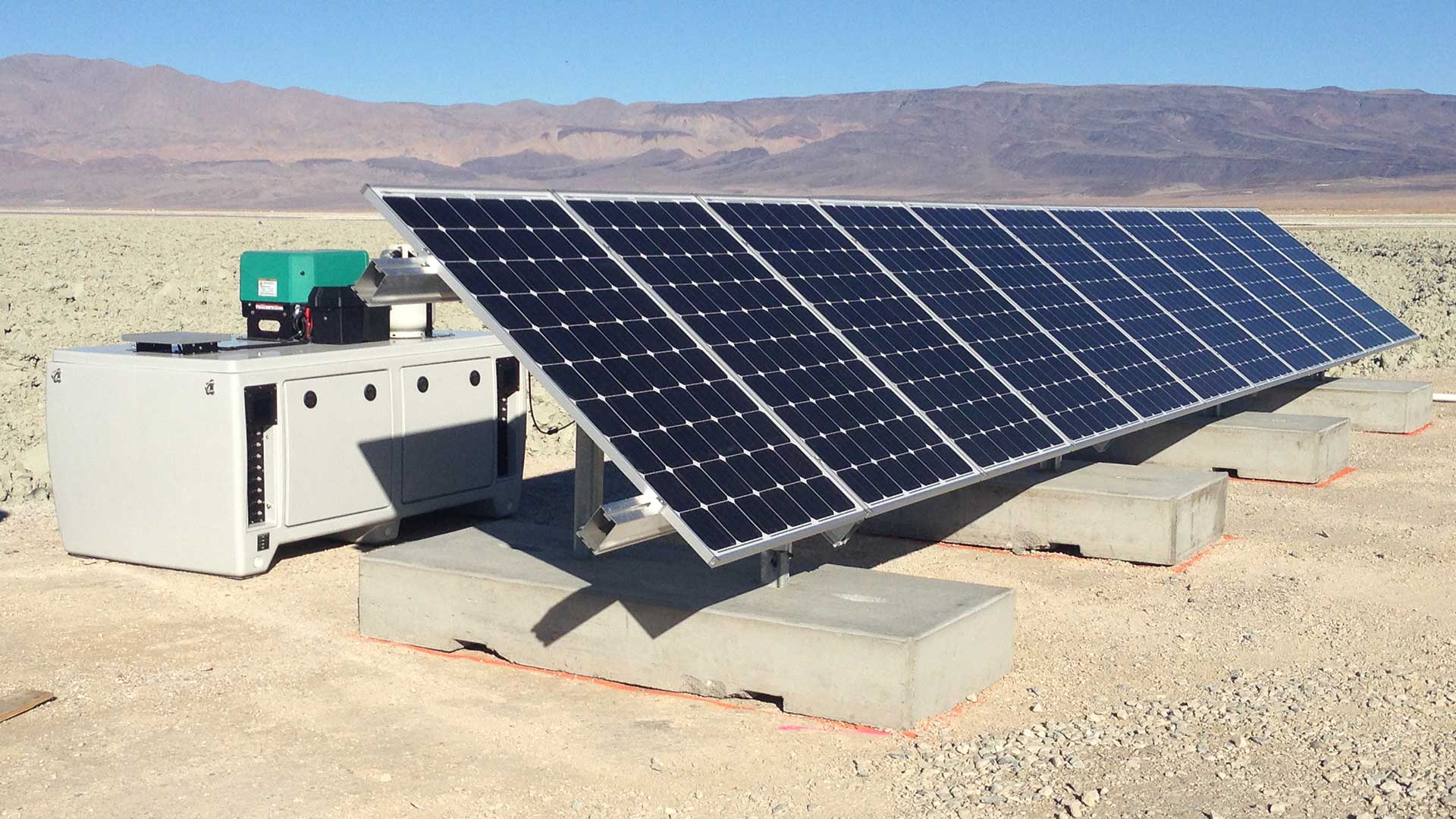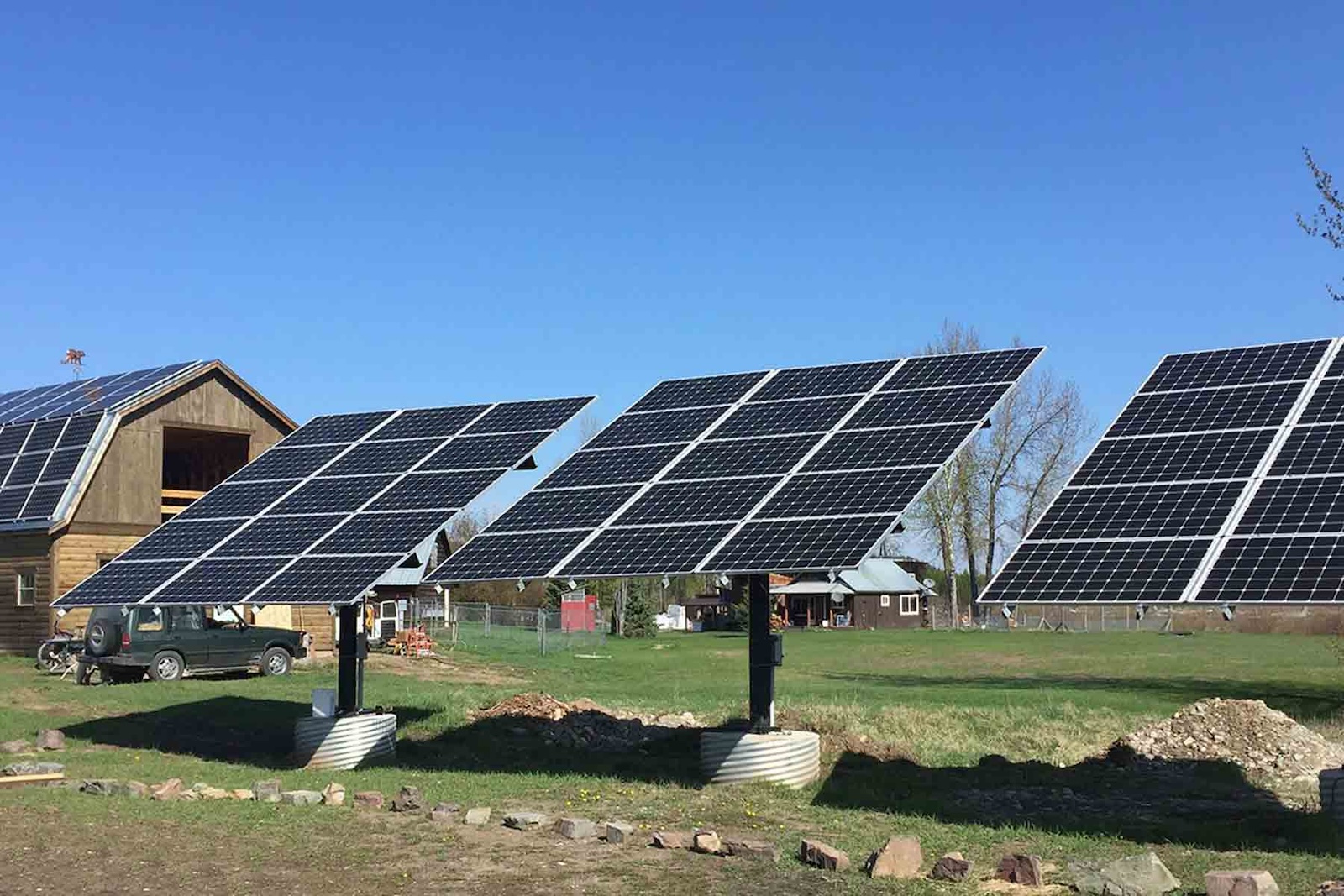Published on 05 March 2025
Off-Grid Photovoltaic Systems: A Complete Guide for 2025

What are Off-Grid (Island) Photovoltaic Systems?
Off-grid, or stand-alone, photovoltaic systems are completely independent of the public electricity grid. Unlike the more common on-grid systems, which are connected to the national grid and can exchange energy with the utility company, off-grid solar systems operate in total autonomy. The energy produced by the panels is either used immediately or stored in a battery system to meet energy needs even when there's no sun.
Comparison Between Off-Grid and On-Grid Systems
The on-grid photovoltaic system is the most widespread solution in urban areas or contexts where the electrical grid is reliable and available. Its main advantage is that it allows you to sell the excess energy produced and draw it from the grid during periods of low sunlight, eliminating the need for batteries. On the other hand, an off-grid (island) system is ideal for those seeking total autonomy, without depending on the national grid. It is the perfect choice for mountain huts, homes in remote areas, agricultural structures, or RVs, where connecting to the grid would be too expensive or technically impossible. However, for an off-grid photovoltaic system to be efficient, it is essential to correctly size the battery system, because in the absence of sun, the energy must be stored to ensure continuity. This energy autonomy brings with it greater independence, but requires careful planning: a poorly designed island photovoltaic system may not provide sufficient energy or may be excessively expensive. In the next paragraphs, we will see what the essential components of an off-grid photovoltaic system are and how to size it correctly.
Why choose an island photovoltaic system
Advantages
Island photovoltaic systems offer several benefits. First of all, they guarantee a complete independence from the electrical grid, avoiding both potential blackouts and any tariff increases. This autonomy is particularly advantageous in remote locations, where connecting to the grid would be complex or excessively expensive.
Furthermore, modularity is a relevant aspect: in island systems you can decide the power of the panels and the capacity of the batteries based on real consumption, without having to be subject to technical limits imposed by the grid. If, in the future, your consumption increases, it is possible to expand the system by adding further modules or batteries.
Finally, once the initial investment has been paid off, solar energy is practically free. In island photovoltaic systems, this logic of savings is particularly strong, as you do not benefit from incentives or on-site exchange as in the on-grid. However, if you use used photovoltaic panels, you can reduce the initial budget and accelerate the economic return.
Limitations
Despite the advantages, there are some limitations that are good to consider. The first concerns the initial cost: the batteries, necessary to guarantee 24/7 autonomy, represent the highest expense. To have a couple of days of backup (e.g., 2-3 days of autonomy), batteries with significant capacity are needed, and this affects the budget.
A second limitation is maintenance. Some types of batteries (such as lead-acid ones) require periodic checks, top-ups or specific attention. Lithium batteries are more long-lasting and require less maintenance, but have a higher purchase cost.
Then there is the issue of sizing: if you underestimate your consumption or the available hours of sunshine, you risk running out of energy at critical moments. On the contrary, oversizing the system implies a higher expense than necessary. Finally, even on island photovoltaic systems, there could be building or condominium regulations to be respected, especially for the installation of panels on the roof.
Are you looking for used photovoltaic panels?
Go to marketplaceMain Components of an Off-Grid System
Photovoltaic Panels (new or used) The panels are the energy "source" of the system. Those who want to reduce costs can opt for used panels, which can be purchased on specialized marketplaces like KTS, which guarantees their residual power. If the area has good sunlight hours, you could get the necessary energy with a relatively small number of modules. However, it is essential to properly calculate the overall power to cover daily consumption, taking into account any margins for cloudy days.
Charge Controller
The charge controller is the component that manages the energy flow between the panels and the batteries, preventing overcharging or excessive discharging. The two main technologies are:
MPPT (Maximum Power Point Tracking), which maximizes the energy captured by the panels, adapting voltage and current to the point of maximum yield. It is particularly suitable when the panels have different characteristics or if you want to optimize every single watt produced.
PWM (Pulse Width Modulation), a more economical solution, suitable for small-scale systems with similar panels.
Storage Batteries
The batteries represent the system's "reservoir." There are various technologies: lead-acid (economical but bulkier and requiring periodic maintenance), AGM/Gel (slightly more efficient and less subject to maintenance), and finally lithium (LiFePO4), which guarantee a longer lifespan and more charge/discharge cycles, although at a higher initial cost. To size them, you start with your daily consumption and decide how many days of autonomy you want, considering the depth of discharge (DoD).
Off-Grid Inverter
The inverter transforms the direct current (DC) from the batteries into alternating current (AC) at 230V, powering your household devices. It must be chosen based on the maximum power you expect to use (for example, if you are running high-consumption appliances). Some off-grid inverters are "hybrid," meaning they can also manage a potential backup generator or integrate multiple energy sources.
How to size an off-grid photovoltaic system
Calculating daily consumption
The first step in sizing an off-grid photovoltaic system is to calculate daily consumption in Wh/day. Simply list all appliances (lights, refrigerator, TV, water pump), their power rating (W) and usage hours. Adding these values gives an estimate of the daily energy demand (e.g., 3 kWh/day).
Choosing the panel power
Based on consumption and the average solar irradiation in the area (e.g., 4 hours of “full” sun per day), you can determine the required power (kWp). If your consumption is 3 kWh/day, you might consider about 1–1.5 kWp of panels, adding a 20–30% margin to cover inefficiencies or periods of lower irradiation.
Battery capacity
Per assicurare energia anche nei giorni nuvolosi, è importante avere batterie con una capacità sufficiente. Ad esempio, se il tuo consumo giornaliero è di 3 kWh e vuoi avere 2 giorni di autonomia, avrai bisogno di almeno 6 kWh di accumulo. Tuttavia, non tutte le batterie possono essere scaricate completamente senza danneggiarsi: quelle piombo-acido possono essere utilizzate solo fino al 50% della loro capacità. Quindi, per ottenere 6 kWh effettivi, dovresti installare batterie con almeno 12 kWh di capacità nominale. Se scegli batterie al litio, che possono essere scaricate fino all'80-90%, la capacità necessaria sarà inferiore.
Charge controller and inverter
The charge controller must withstand the voltage and current from the panels, while the inverter must handle the peak load (e.g., 2 kW if the refrigerator, pumps, or other devices are started simultaneously). An undersized inverter would shut down due to overload, while an oversized one would only increase costs without real benefits.
Indicative costs
Small system (1 kWp): ~€1,500–2,500 (including batteries), depending on whether you choose used or new panels.
Medium system (3 kWp): €5,000–7,000, depending on battery technology (lead-acid vs lithium).
Large system (5 kWp): can exceed €10,000 if you want 2–3 days of autonomy with lithium batteries.
Regulations and permits
Off-grid photovoltaic systems do not require contracts with the power grid operator, but may still be subject to building and safety regulations:
Local and condominium rules: if you install panels on the roof, you may need to submit CILA/SCIA to the municipality. In a condominium, approval from the assembly is required for interventions on shared areas.
Electrical safety: CEI regulations (e.g., 64-8, 82-25) require the use of protections against overloads and short circuits.
Backup generators: if you plan to use a combustion engine, check emissions and permits.
Choosing used panels on KTS for an off-grid photovoltaic system
Opting for used photovoltaic panels for an off-grid system offers two major advantages. First, it reduces the initial investment, since modules represent a significant cost item. By buying second-hand panels, you can allocate more resources to batteries, the core of an off-grid system. Second, you extend the useful life of the panels, supporting the circular economy and reducing environmental impact.
On KTS, you’ll find a specialized marketplace where buyers and sellers meet. Even though these are second-hand modules, you’ll know their actual characteristics and can choose those most suitable for your system. If your consumption increases in the future, you can always purchase additional used panels and gradually expand the system.
In summary:
Savings
used panels cost less, reducing the initial investment in an already expensive system due to batteries.
Sustainability
extending the lifespan of modules prevents premature disposal and promotes the circular economy
Specialized marketplace
KTS offers used photovoltaic panels with declared residual power, from different brands and power ratings.
Flexibility
if your consumption grows, you can buy more used panels to upgrade your system.
Remember that KeepTheSun does not act as an intermediary in the transaction. The sale is free between buyer and seller, with no KTS involvement.

Off-Grid Photovoltaic Systems: FAQs
Is it legal to disconnect completely from the grid?
Yes, as long as you comply with building and safety regulations (CEI). If you live in a condominium, the assembly may need to approve work on the roof or common areas.
How many panels are needed to power an off-grid home?
It depends on your consumption (kWh/day) and local sun exposure. For 3 kWh/day with about 4 hours of full sun, we recommend at least 1-1.5 kWp of panels, with a safety margin.
How do I choose batteries for an off-grid photovoltaic system?
You need to evaluate their capacity in kWh, life cycles, and cost. Lithium (LiFePO4) batteries are more durable and perform better but are more expensive; lead-acid batteries are cheaper but require maintenance and have a shorter lifespan.
What happens if the batteries are full and the panels keep producing?
The charge controller stops or limits the excess energy, preventing the batteries from being overloaded. Since there is no grid, that surplus energy cannot be fed anywhere else.
Why use used photovoltaic panels for an off-grid system?
Choosing used photovoltaic panels to build an off-grid photovoltaic system is a smart choice to reduce costs and act ecologically, by extending the useful life of the panels.
Do I need special permits for off-grid?
You don't need a contract with the electric utility for off-grid, but you may have to submit building permits (CILA, SCIA) or comply with condominium regulations. Each municipality may have specific rules, so check locally.
Off-Grid Photovoltaic Systems: Final Considerations
Off-grid solar represents the ideal solution for those who want energy autonomy, especially in remote areas or where the grid is absent or excessively expensive. With proper sizing (panels + batteries) and adequate maintenance, you can cover your consumption and become independent from bills and blackouts.
Looking for used photovoltaic panels?
Go to the marketplace